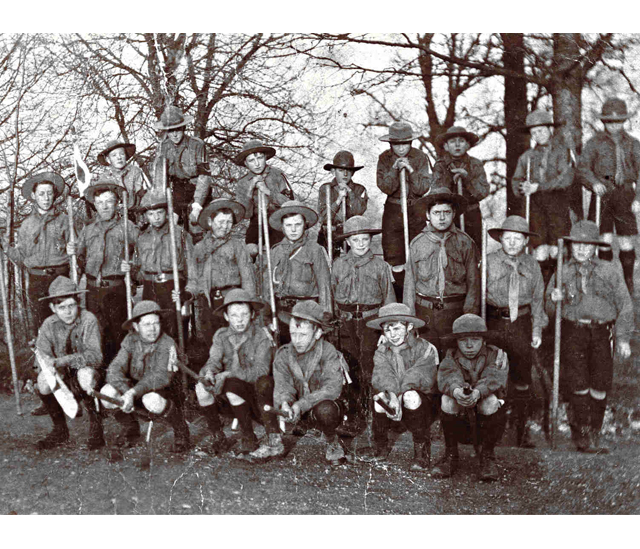During the First World War, Britain was faced with shortages to various chemicals and components for ammunition. In order to maintain its army in the field inventive solutions to these shortages were sought.
Mr Haylock the headmaster wrote an entry in the Willingdon School Log Book for 30 January 1917: ‘Sent off today 3 bushels of horse chestnuts gathered by children for the Minister of Munitions.’ Over the previous weeks there were notes in the Log that the children had been out in the parish during the school day collecting conkers as part of the war effort. Many of the schoolboys also belonged to the 1st Ratton Scout Troop founded by Lord Willingdon and the scouts were also seen around the parish busily searching in the grass under the horse chestnut trees and filling boxes and baskets with conkers. Once collected they brought them back to the schoolroom to removed the green shells, leaving just the nuts. These were bagged up in sacks, put on a hand cart and wheeled off to Hampden Park Station ready for collection and transportation by train to London and from there to secret locations.
So why were the children collecting so many conkers? This was the question asked by many of the villagers.
The Ministry of Munitions ordered the collection of conkers, across the country, to help make ammunition for small arms and artillery. Acetone was a vital component of cordite, which was used as a propellant for shells and other arms. Secret factories had been set up in Poole, Dorset and Kings Lynn, Norfolk, which had been producing 90,000 gallons a year. North American maize was the normal source but with the increased activity by German U boats in the Atlantic there became a shortage. It was vital an alternative source was urgently found. Research showed the starch in conkers to be a substitute for the maize and so all headmasters were urgently directed to send out pupils during the school day to collect as many conkers as they could find. Vast quantities of conkers were collected, weighed, bagged and sent off to collection centres. Perhaps more were collected than anticipated as unfortunately transport was not always particularly efficient and there are reports of sacks of conkers left rotting on station platforms.
The schools were paid 7/6d for each cwt of conkers collected but a veil of secrecy surrounded the reason why the children were actually collecting them. A question was even asked in the House of Commons but the answer given simply stated that they were required for “certain purposes”. It was said this was for fear that the Germans would discover this ingenious method of acetone production. No one would have thought that the humble conker could play a part in winning the war. Production continued until July 1918 but by the autumn of that year conkers had returned to their normal role, firmly threaded on the end of a string ready for small schoolboys to play their annual matches.
This story was submitted by Rosalind Hodge, Archivist, Willingdon Parish Church









